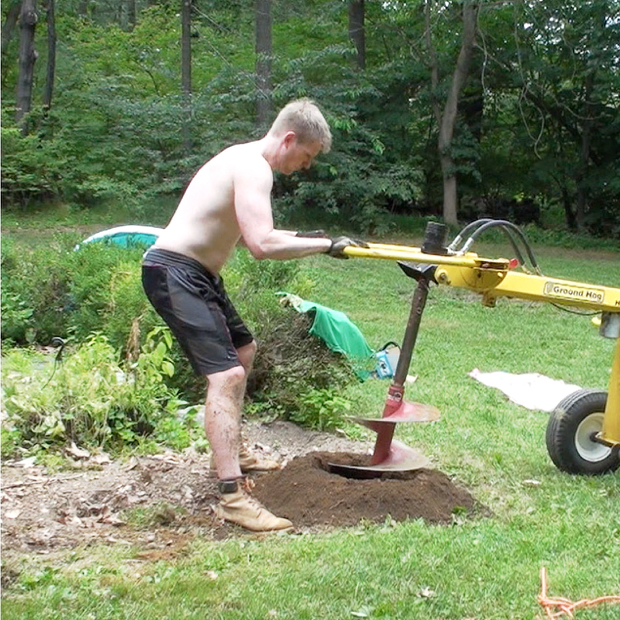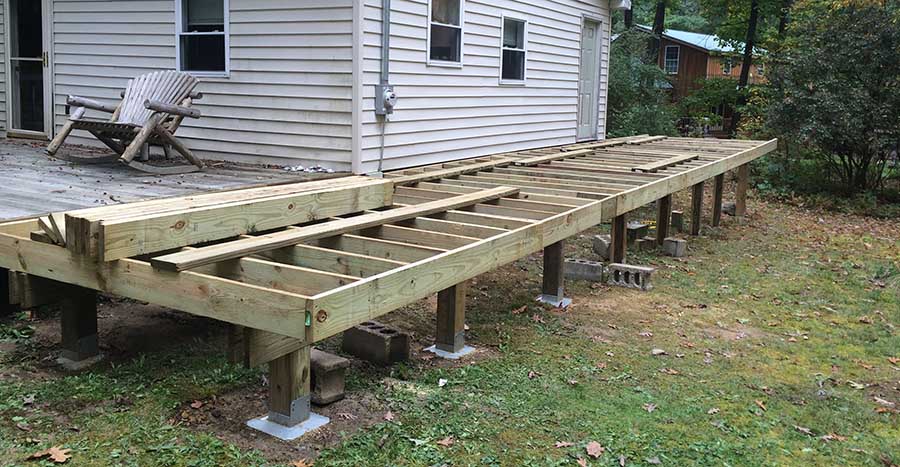From Principle to Concrete: The Essential Role of Deck Footings in Sturdy and Safe Decks
Specialist Tips for Setting Up Deck Footings to Support Your Outdoor Space
When it comes to developing a deck, one of the most critical aspects to think about is the setup of proper grounds. These footings are the structure upon which your outside area will certainly rest, supplying stability and assistance for years to come. What exactly does it take to set up deck grounds properly?
Importance of Appropriate Deck Grounds
Correct deck footings are necessary for ensuring the stability and longevity of your outdoor space. When constructing a deck, it is critical to pay attention to the structure on which it will rest. Deck grounds supply the necessary assistance for the entire structure and assistance distribute the weight evenly - Deck Footings. Without solid and correctly installed footings, your deck might become unpredictable, leading to safety dangers and pricey repair work.

In enhancement to stability, appropriate deck grounds additionally add to the longevity of your outdoor room (Deck Footings). Grounds that are made and constructed to hold up against the components and soil conditions in your area will help avoid the deck from resolving or moving over time. By ensuring the grounds are properly sized and set up, you can minimize the threat of damage to the deck framework, extending its life-span and minimizing the need for pricey repair services or replacements

Picking the Right Sort Of Footings
When choosing the ideal sort of footings for your deck, it is essential to consider elements such as dirt problems, local building ordinance, and the overall design of your outside space. The kind of footing you pick will play an essential function in making certain the stability and longevity of your deck.
One typical kind of ground is the concrete footing. Concrete footings are suitable for most dirt problems and give exceptional support for decks.
Sometimes, you may need to use specialized grounds, such as heap grounds or deep structures, if you are developing a multi-level or large deck. These footings are developed to distribute the weight of the deck over a larger area, ensuring security and preventing sinking or working out.
Prior to picking a sort of ground, it is vital to consult local structure codes and laws to guarantee compliance. In addition, take into consideration the style and planned use your outside space. Elements such as the size, form, and load-bearing needs of your deck will certainly affect the sort of footing that is most suitable.
Preparing the Ground for Footing Installment
To appropriately prepare the ground for footing setup, it is vital to analyze the dirt conditions and take needed actions to make sure stability and longevity of the deck. The very first step is to dig deep into the area where the grounds will be set up.
As soon as the location has been dug deep into, the next step is to portable the soil. This can be done making use of a plate compactor or by utilizing a hand meddle. Condensing the soil helps to eliminate any kind of gaps or air pockets, which can bring about clearing up and instability over time.
After compacting the soil, it is crucial to lay a layer of gravel or crushed stone at the base of the excavation. This will supply water drainage and help to avoid water from merging around the grounds, which can bring about erosion and instability.
Step-by-Step Guide to Setting Up Deck Footings
After properly preparing the ground for footing installation, the next action is to begin the procedure of setting up deck footings. This detailed guide will give you with a clear understanding of just how to install deck grounds for your exterior space.
Determine the location: Start by marking the positions of the deck footings using stakes and string. Guarantee that the places line up with the style and design of your deck.
Dig the holes: Use a message hole digger or an auger to dig the holes for the grounds. The deepness and size of the openings should be in conformity with local building ordinance and the specific demands of your deck style.
Level the openings: Utilize a degree to make certain that the holes are dug to the proper deepness and are degree with each other. (Deck Footings)
Add crushed rock: Area a layer of gravel at the end of each hole to boost water drainage and stop the wood from decomposing.
Put the grounds: Place the footings into the holes, making certain they are level and plumb. Make use of a go right here degree and a measuring tape to guarantee accuracy.
Safeguard the footings: Pour concrete right into the holes around the footings, loading them to the top. Utilize a message level to make certain the footings remain degree as the concrete sets.
Allow time for healing: Allow the concrete remedy according to the producer's guidelines prior to waging the deck building and construction.
Usual Mistakes to Prevent Throughout Footing Installment
One important element to think about throughout the installation of deck grounds is avoiding usual errors that can endanger the stability and long life of your outdoor room. While deck footings might seem like a basic and straightforward component of the construction process, overlooking particular variables can result in pricey fixings and prospective safety threats down the line.

Furthermore, neglecting to install correct drainage actions can create water to build up around the grounds, causing rot, decay, and the ultimate weakening of the deck's structure. Making use of the wrong kind of footing material or falling short to appropriately safeguard the grounds can compromise their structural stability.
To avoid these errors, read it is important to seek advice from a specialist or follow market standards to make certain proper footing installation. By doing so, you can make sure the security and longevity of your outdoor area, supplying a secure and pleasurable setting for several years to come.
Conclusion
To conclude, setting up appropriate deck grounds is crucial for the stability and longevity of your outdoor area. By selecting the best type of footings and appropriately preparing useful content the ground, you can ensure a solid foundation for your deck. Following a step-by-step guide and preventing typical blunders during footing installation will additionally boost the resilience and security of your deck.
Correct deck grounds are crucial for guaranteeing the stability and longevity of your outdoor space. The footings offer as a connection between the deck and the ground, enabling the weight of the deck and its residents to be dispersed uniformly right into the dirt.One common kind of footing is the concrete ground. Put the footings: Position the footings right into the openings, making sure they are degree and plumb. Safeguard the grounds: Put concrete into the holes around the footings, loading them to the top.